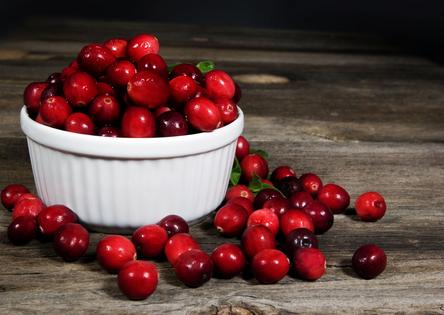Environmental Nutrition: Brighten your day with red produce
In the dark days of winter, there is nothing like red to warm our hearts ... and protect them, too. Here's an in depth look at some of the season's reddest, healthiest choices.
Pomegranates. Pomegranates are a good source of blood-clotting vitamin K, tissue-repairing antioxidant vitamin C, and filling fiber, but they really stand out for their phytochemicals. The rich, red color of this fruit comes from flavonoids called anthocyanins, which have been linked to numerous health benefits including lower risk of coronary artery disease. Pomegranates also contain ellagic acid, which has been investigated for its cancer-fighting and anti-inflammatory effects. Submerge cut sections in a bowl of water while gently removing the edible seeds. After straining, sprinkle on salads or meat and fish dishes for a delicious pop of color.
Cranberries. While cranberries, like pomegranates, get their red color from health-promoting anthocyanins, they also contain phytochemicals with anti-bacterial properties. Cranberry juice is commonly used for prevention and treatment of urinary tract infections. These sour jewels are also an excellent source of vitamin C and manganese, which supports bone health. Enjoy dried cranberries in cereals, salads, and side dishes (but be aware that they have added sugars). Buy fresh berries that are firm and not shriveled for relishes, sauces and jellies.
Beets. Arguably the reddest of the red produce, earthy beets are an excellent source of bone-building manganese, the B vitamin folate, and fiber, and have plenty of vitamin C and blood-pressure-lowering potassium as well. That deep red color comes from potent antioxidant compounds called betalains, which interfere with the formation of arterial plaque. Beets also provide betaine, which may protect cells from stress. The nitrates in beets help blood vessels dilate, so beet juice is popular with athletes looking to speed the delivery of oxygen to muscles. Look for smaller beets with firm, smooth skins. Rub with olive oil and roast to bring out beets' natural sweetness, or bake, boil or saute.
Red Pears. Red d'Anjou pears are fresh and sweet at a time of year when fresh fruit is in short supply. An excellent source of fiber and a good source of vitamin C, red pears also are packed with phytochemicals called anthocyanins and triterpenoids, which have antioxidant and anti-inflammatory properties. But these phytochemicals, as well as the vitamin C and a lot of the insoluble fiber, are concentrated in the tender skin, so enjoy these pears un-peeled for the biggest nutritional impact. D'Anjou pears, ripe when they yield to slight pressure at the neck, are perfect for snacking, with cheese and in salads. Bake, roast, or poach for a special dessert.
Red foods lift the spirits and brighten dark winter days, all while helping to keep you healthy through the season, and beyond.
(Environmental Nutrition is the award-winning independent newsletter written by nutrition experts dedicated to providing readers up-to-date, accurate information about health and nutrition in clear, concise English. For more information, visit www.environmentalnutrition.com.)







